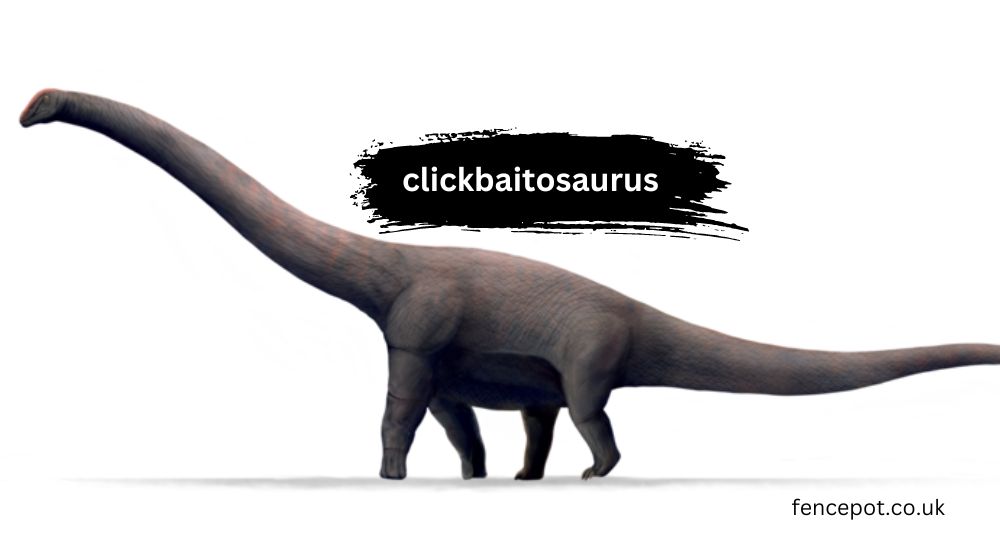In the vast digital jungle, content creators and marketers are constantly looking for new ways to capture attention. But amidst all this creativity, a beast lurks — the dreaded Clickbaitosaurus. This isn’t just your ordinary clickbait; it’s the evolved, monstrous form that manipulates and deceives readers. Let’s dive into this phenomenon, understand its roots, and explore why it’s wreaking havoc on digital media.
The Evolution of Clickbait
Clickbait started innocuously enough. In the early days of the internet, clever headlines helped publishers stand out in a sea of content. But as the competition for attention intensified, these attention-grabbing techniques morphed into something far more sinister. This evolution gave birth to the Clickbaitosaurus, an aggressive strategy that misleads, exploits emotions, and often leaves the reader feeling cheated.
Characteristics of Clickbaitosaurus
Like a predatory dinosaur, the Clickbaitosaurus has defining traits that make it dangerous:
- Deceptive headlines: These headlines promise much more than the content delivers, luring readers in with false hopes.
- Overpromising and underdelivering: This tactic hooks readers with sensational promises but often falls flat, delivering shallow or irrelevant content.
- Emotional manipulation: By preying on readers’ emotions — be it excitement, anger, or curiosity — the Clickbaitosaurus drives engagement without providing genuine value.
The Anatomy of a Clickbaitosaurus Post
Let’s dissect the beast to understand how it operates.
Eye-catching headlines
Headlines are its claws — sharp, grabbing, and pulling you in. They often use words like “shocking,” “unbelievable,” or “you won’t believe.” While these work momentarily, they fail to build long-term relationships with readers.
Misleading images
Clickbaitosaurus loves to pair sensational headlines with eye-popping images. These visuals might suggest something scandalous or exciting, but upon clicking, the content has little to do with the image. A classic bait-and-switch tactic.
Bait-and-switch tactics
You might think you’re clicking on a groundbreaking news story, but what you get is an irrelevant or overly padded article that disappoints, making you regret ever engaging with it.
Why Clickbait Works (and Why It Doesn’t)
Why do we still fall for the Clickbaitosaurus? It’s all about psychology. Humans are naturally curious. When we see a headline that hints at something surprising, our brains crave closure. This curiosity drives clicks — but it’s a fleeting reaction. Once a reader realizes they’ve been duped, frustration sets in. Sure, clickbait drives traffic. More clicks equal more views, and more views equal higher ad revenue. But these short-term gains come at a long-term cost. When readers feel tricked, they lose trust. This eroded trust leads to dwindling engagement over time. The more someone feels deceived, the less likely they are to return, eventually starving the clickbait site of loyal readership.
How to Identify Clickbaitosaurus in the Wild
Clickbaitosaurus might be sneaky, but it has certain giveaways. Headlines that seem too good to be true usually are. Look out for exaggerated language, vague promises, and sensationalism. If a headline sounds more like gossip than news, it’s probably clickbait. Does the headline leave you with more questions than answers? That’s a classic sign. Authentic content should entice but also give you a clear idea of what to expect. Vague promises often mean a hollow article.
Clickbaitosaurus in Modern Media
Clickbait isn’t confined to shady websites anymore. Even major media outlets and influencers sometimes employ Clickbaitosaurus tactics to stay relevant. However, unlike smaller sites, these entities face backlash if caught consistently misleading their audiences. Platforms like Facebook, Twitter, and Instagram are fertile ground for clickbait. Content spreads quickly, and users often share without reading. This makes social media a haven for Clickbaito saurus to thrive.
The Dangers of Clickbaitosaurus
Clickbait isn’t just annoying — it can be dangerous. Deceptive headlines often promote misinformation, leading to confusion and mistrust. In serious situations, this misinformation can have real-world consequences. The rise of Clickbaitosaurus has contributed to a general distrust in online media. People are more skeptical of what they read, making it harder for trustworthy sources to break through.For brands, employing clickbait can backfire. Once consumers feel tricked, they’re less likely to engage with future content, damaging both the brand’s reputation and long-term success.
Clickbaitosaurus vs. Quality Content
In the battle between clickbait and quality content, quality always wins. Quality content builds trust, loyalty, and long-term relationships with readers. It provides real value and delivers on its promises, encouraging readers to return time and time again. Audiences value honesty and integrity. If you consistently produce quality content, you’ll cultivate a loyal following that will trust and recommend your work.
How to Avoid Becoming a Clickbaitosaurus
As a content creator, it’s essential to avoid the temptations of the Clickbaito saurus. Focus on delivering real value. Use enticing headlines, but ensure they’re accurate and reflect the content. Over time, this approach will build a dedicated and engaged audience. Be truthful. Craft headlines that capture attention but remain grounded in the reality of what you’re offering. Honesty is the best way to maintain reader trust.
Successful Alternatives to Clickbaitosaurus
There are better ways to engage your audience. Instead of relying on sensationalism, focus on creating stories that resonate with readers. Authentic content not only performs better but also fosters a genuine connection with your audience. Storytelling is one of the most effective tools for engagement. Rather than baiting readers with empty promises, use compelling narratives to draw them in and keep them invested.
The Role of SEO in Avoiding Clickbaitosaurus
SEO doesn’t have to mean misleading your audience. A well-optimized article that genuinely answers questions will perform better over time than a clickbait headline. SEO should focus on creating content that’s both valuable and discoverable. A good headline doesn’t have to deceive. Balance intrigue with transparency to ensure your readers get what they expect while still grabbing their attention.
Clickbaitosaurus and the Future of Digital Media
What does the future hold for the Clickbaitosaurus? As platforms crack down on misinformation and disingenuous content, the Clickbaito saurus may find its habitat shrinking. However, it’s unlikely to disappear entirely. Content curation and authentic marketing are on the rise. Consumers increasingly value real stories and meaningful interactions over sensationalized headlines. This trend may ultimately drive the Clickbaitosaurus into extinction.
Case Studies: Clickbaitosaurus in Action
Several brands and websites have faced backlash for employing Clickbaito saurus tactics. These moments serve as cautionary tales for others thinking of going down the same path. Some brands managed to recover by issuing apologies, improving content quality, and recommitting to trust-building strategies.
Conclusion
The Clickbaitosaurus might be tempting, but its deceptive nature is a recipe for long-term failure. Content creators and brands should focus on building trust with quality, authentic content that resonates with their audience. By doing so, they can ensure a loyal readership that values integrity over empty promises.
Read More interesting topic about bedroom













